Free Hazard Perception Tests
Hazard Perception Test Full-Length Mock Tests (14 Clips)
About the Hazard Perception Test
Contents
- 1 About the Hazard Perception Test
- 2 What is Hazard Perception?
- 3 Is Hazard Perception Important?
- 4 Does the evidence back up the need for a Hazard Perception Test?
- 5 Are professional ADI, LGV and PCV drivers required to take a hazard perception test?
- 6 What can I expect from the Hazard Perception Test?
- 7 Hazard Perception Test Explained: FAQs
- 8 Types of Hazards
- 9 States of a Hazard
- 10 Hazard Perception Test Practice
- 11 Commentary Driving
- 12 Practice the Hazard Perception Test Online
The Hazard Perception Test, as the name suggests, is designed to test your ability to identify hazards that are upcoming on the road and does this through a video-based system which requires you to click the mouse whenever you notice a hazard.
As you will know, in order to gain your full driving licence, you are required to pass both the driving theory test and practical test before you can enjoy the freedom of the open road alone. However, the Theory Test is no longer simply a set of multiple-choice questions, and since 2001, this exam has included the Hazard Perception Test, which takes place afterwards – you need to pass both sections of the Theory Test in order to get your certificate.
Through the Hazard Perception Test, you are being assessed on your awareness of the risks that are present on the road and the danger these can pose to yourself, your passengers, other drivers, and pedestrians. Fortunately, you can practice the Hazard Perception Test beforehand, both through practice video clips offered on this website and by being acutely aware of hazards each time you have a driving lesson.
Below is a video of the official Introduction to Hazard Perception video clip, together with an explanation of what to expect in the actual Hazard Perception test:

What is Hazard Perception?
Simply put, hazard perception is the ability of drivers to spot potentially dangerous situations as soon as possible in order that they are able to adapt their driving as appropriate. For example, if they notice a sign indicating a pedestrian crossing, they may prepare to adjust their speed and check their mirrors, or if they are approaching a cyclist, they may need to check their mirrors, speed, and change their position on the road.
Hazard perception involves a variety of techniques, including: scanning; planning in advance; maintaining a safe distance; driving at an appropriate speed, and anticipating danger well, amongst many other skills.
Is Hazard Perception Important?
With an average of 5 people killed every day on UK roads and countless more people seriously injured, improving hazard perception skills is vital to improving road safety. Moreover, road casualty reductions have largely levelled off since 2010, meaning improving hazard perception skills remains a critical concern.
It is true that young drivers tend to have quicker reactions than older motorists in hazard perception testing. However, every year, young drivers (aged 17-24) still account for a disproportionately high number of reported road accidents compared to their representation of around 7% of road users and lower road usage in terms of miles driven.
In addition, new motorists take up to two seconds longer to recognise hazardous situations than experienced drivers, meaning their accident liability is very high for at least the first 12 months, before dropping sharply thereafter based on improved experience. Moreover, more experienced motorists are better able to scan the road and recognise potentially hazardous situations before they develop into a more serious incident
Many test candidates show poor anticipation skills and difficulty scanning, both vital for hazard awareness. As a result, implementing a method to test these skills was considered vital to continually improve motorist training and overall road safety levels.
Since large vehicles are much more likely to seriously injure or kill other road users when involved in a collision due to their higher mass, improving the hazard perception skills of LGV and PCV drivers continually is also seen as a vital method to reducing serious road accidents.
Does the evidence back up the need for a Hazard Perception Test?
Whilst improved hazard perception skills are usually associated with increases in actual driving experience, hazard perception tests have also been shown to be able to speed up the acquisition of these skills through computerised testing. In addition, research has shown that hazard perception testing:
- contributed to a significant reduction in certain road accidents in the year following its introduction into the UK, such as reducing non-slow public-road crash rates by over 10%.
- speeds up the acquisition of hazard perception skills such as: anticipation; scanning; awareness, and; planning appropriately.
- can enable new motorists to reach the same score level of experienced motorists with just 3 hours of training.
Are professional ADI, LGV and PCV drivers required to take a hazard perception test?
All professional ADI, LGV and PCV drivers are now required to take a hazard perception test during the course of their theory tests. However, there is a further responsibility on these drivers to show a higher proficiency than those learners not seeking to drive LGVs or PCVs. This means pass marks are higher and the video tests are longer for LGV Hazard Perception Test and PCV Hazard Perception Test learners, although other than this the theory tests are the same.
What can I expect from the Hazard Perception Test?
It is a good idea to familiarise yourself with the structure of the Theory Test so that you are fully prepared for the sequence the test takes. There is nothing worse than an unexpected surprise when it comes to exams!
First off you will undertake 50 multiple-choice questions as part of the driving theory section of the test. You are then given a much welcome 3-minute break to gather your thoughts and give your eyes a break from the screen, following this is the beginning of the video-based Hazard Perception Test.
Following a video clip on how the test works you will be given the opportunity to practice using the mouse to make sure the system is working. You will then be shown 14 video clips, filmed from the driver’s perspective, which feature everyday road scenes containing at least one developing hazard that you are required to notice.
In order to demonstrate that you have noticed the hazard, which could be anything from someone walking out into the road or the requirement to change direction, you need to click the mouse as soon as you see the hazard emerging. You indeed earn more points the quicker you spot the hazard, but it is not a good idea to click as much as you possibly can, as you will be penalised for this, as there is a click limit.
Hazard Perception Test Explained: FAQs
How long does the Hazard Perception Test last?
The Hazard Perception Test, if you’re taking the driving theory test or motorcycle theory test, lasts for a total of 20 minutes. During that time, you will be shown 14 video clips, each lasting 60 seconds.
If you’re sitting the LGV theory test or the PCV theory test, there are 19 videos in total.
How many hazards am I required to spot?
For 13 of the videos, there will be one hazard per clip, and for one video, there will be two hazards to identify. Don’t worry, you won’t be penalised if you click more than once on a one-hazard video – unless the programme detects a heavy click rate, which is translated as cheating.
Can I revisit any of the videos?
No, it is not possible to revisit and change your response to any of the video clips, so make sure your concentration is on point.
What is the best approach to the Hazard Perception Test?
The best way to approach the test is to view the videos as if you were in the driver’s seat, so as soon as you spot something that you know would require a reaction on the road, click your mouse. Not all hazards require an immediate response, so be sure to keep a lookout for developing hazards as well.
How is the Hazard Perception test scored?
There are 15 hazards to spot in the test, with a maximum of 5 points per hazard. If you respond as soon as the hazard starts to develop, you will achieve the top score of 5 points, which then descends to 0 depending on how quickly you respond. You will be marked zero if you miss the hazard.
How many points do I need to score to pass the Hazard Perception Test?
In order to pass the test, you need to score 44 out of a possible 75 points.
Types of Hazards
While hazards will vary depending on where you are driving, the most common hazards a driver is likely to come across are:
- Doors opening on parked cars
- Pedestrians crossing the road
- Children running out into the road
- Cars coming out of junctions
- Cyclists and motorcyclists
- Animals on the road
- Bends in the road
- Bin lorries that may be blocking the road
States of a Hazard
As a good driver, you should be looking out for hazards at all times and be able to respond safely to whatever state the hazard is in. It is essential to recognise that hazards exist in various states, categorised into three distinct states: potential hazard, developing hazard, and actual hazard.
Let’s take a look at each of these stages in more detail.
Potential Hazard
As the name suggests, a potential hazard is something that might develop and turn into a hazard. When you notice the potential hazard, it won’t pose a risk at that moment, but it needs monitoring and keeping an eye on it so that you are ready to respond should the hazard develop.
An example of a potential hazard is spotting a pedestrian walking along the road you are driving on, who may at any time try to cross the road. Or you may be driving in an area where there is a zebra crossing, so you may be required to stop at the crossing should a pedestrian wish to cross it. Another type of potential hazard is when driving around a residential area and encountering children playing in the street, who could potentially run out into the road.
Keeping an eye out for potential hazards will go a long way to help you become a good and safe driver, and help you to respond quicker if the hazard develops. It is important to note here that you won’t score any points for clicking on potential hazards in your driving theory test – only hazards that are developing.
Developing Hazard
Next up is the developing hazard. This is the situation where the hazard is much closer to being an actual hazard that you need to prepare to respond to. To refer back to the example given above, the pedestrian that you see walking along the street becomes a developing hazard when they start to walk towards the zebra crossing. In this situation, both the pedestrian and the zebra crossing are developing hazards.
In this scenario, with the hazard developing, prepare for the hazard by checking your mirrors to be aware of what is happening behind and around you on the road. In the hazard perception test, you will be assessed on your ability to spot developing hazards. You can indicate that you have spotted a developing hazard by clicking your mouse at the moment you would check your mirrors when driving. The quicker you spot a developing hazard, the more points you score.
Actual Hazard
When the situation becomes an actual hazard, you need to either stop the car, slow down, or change direction to avoid the hazard and prevent an accident from occurring. Using our example again, this situation becomes an actual hazard when the pedestrian steps onto the zebra crossing, and you need to stop the car to allow them to cross. This pedestrian is now an actual hazard.
In the hazard perception test, clicking the mouse at this point is too late, and could result in either low points or a zero score for that particular hazard. Make sure you identify the hazard when it is developing and before it becomes an actual hazard, as you would when driving.
Hazard Perception Test Practice
It may not be surprising to hear that it is new drivers who have the most accidents. This is why the Hazard Perception Test isn’t just a tick box exercise to gain your Theory Test certificate – it is a means of ensuring you are fully aware of both the dangers around you as a driver and the potential dangers you yourself can bring to the road.
Ensuring that you are fully prepared for the Hazard Perception Test is essential for both passing the test and preparing you for independent, safe driving. Teaching you hazard perception skills is paramount for any driving instructor, so your driving lessons are the perfect platform to give you skills in anticipating potential hazards, how to spot them and how to react to them safely and effectively.
In addition to practising with your driving instructor, you can also try some practice video clips on this website that mirror the videos in the Hazard Perception Test. This will not only allow you to practice your hazard perception skills but also help you to get familiar with how the clicking system on the test works.
Commentary Driving
A technique worth trying out with your driving instructor is ‘commentary driving’. This is exactly as it sounds, requiring you to comment out loud on the hazards you can see in the vicinity, the options you could take, and what your course of action is.
Also referred to as PER (or Perception, Evaluation, Response), this technique relies on the fact that your speech is five times slower than your brain, making you anticipate hazards that are further ahead and respond to them accordingly.
The benefits of commentary driving are huge for learner drivers, and many learners often see significant improvements in their driving after using this technique. It is an excellent method of helping you to prepare for your Hazard Perception Test and to help you improve your practical driving skills, ready for your practical test.
Below is an example of commentary driving:

Practice the Hazard Perception Test Online
This website contains official test clips that allow you to practice your hazard perception skills, ensuring you are well-prepared for the real test.
Keep your eyes peeled, and your concentration level high as you watch the videos – clicking your mouse when you see a hazard start to develop. Once you have clicked your mouse, you will see a red flag appear on the screen to acknowledge your click (so you know that your click has worked).
Make sure you view the video through the eyes of a driver, reacting as you would in a car to anything that requires an action, such as checking your mirrors or needing to brake. Don’t forget to keep looking out for hazards on the video, even when you have spotted one, as there may be more than one hazard in the video. Once you have completed all of the videos, your score will appear on the screen.






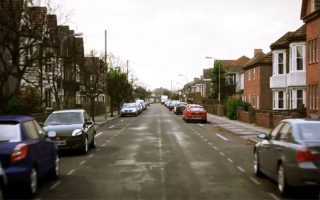






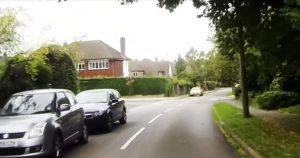
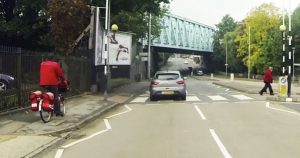
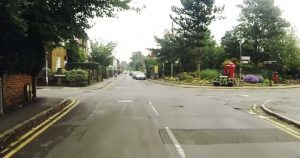
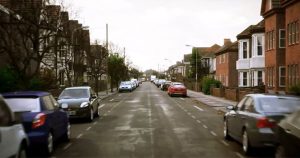
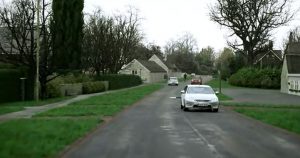
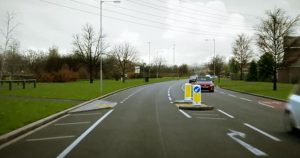
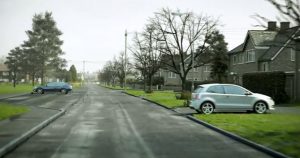




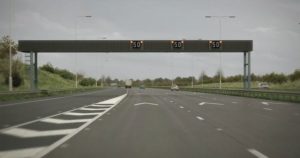
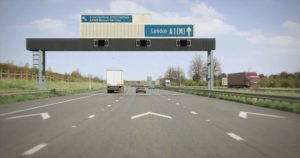



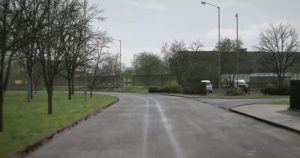

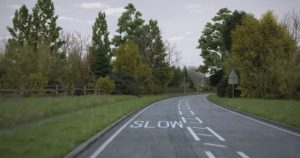
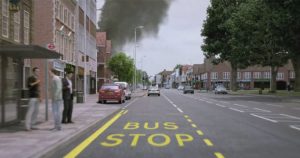
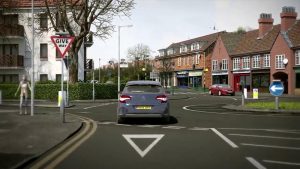
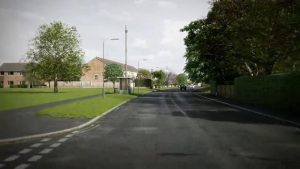

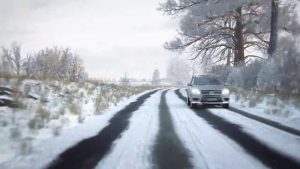
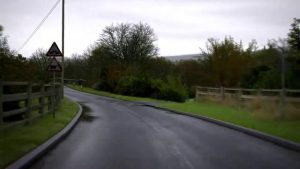
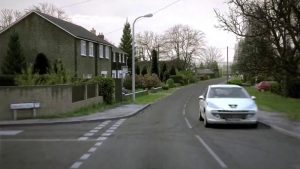
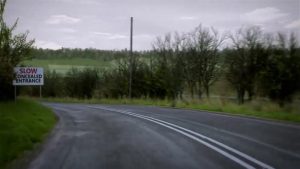


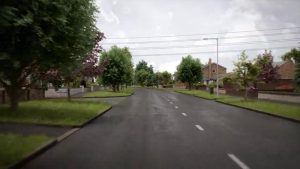
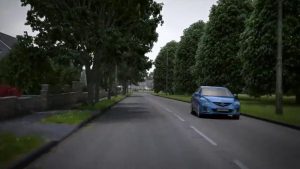
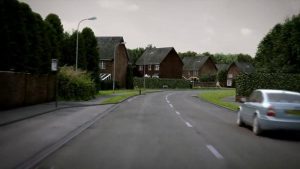
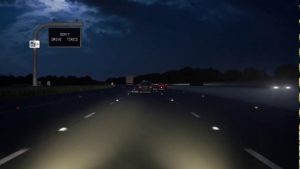
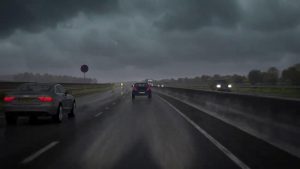

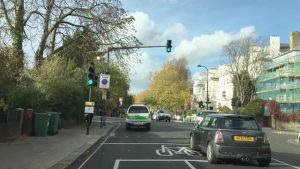

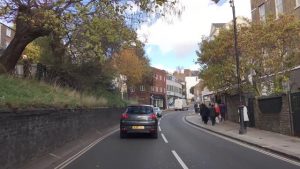
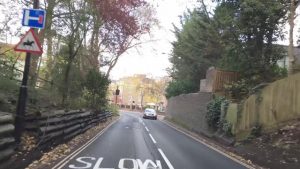





There are 4 comments
How many click do we need to click on each hazard?
Didn’t do too bad with that one – many hazards, corners, narrow road with oncoming cars, bridges (hump back with restricted views), side roads and tracks, tractor that did not stop.
Thank you for your reply I will try to practice more.
Are there only 6 full (14 clips) hazard perception practice tests available?